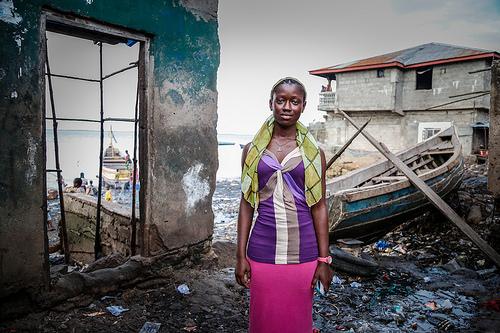Poorer neighborhoods in Liberia's capital were linked to more intense, widespread transmission of Ebola virus disease, compared to more well-off parts of Monrovia, a pattern seen with other infectious disease, researchers reported today.
However, a silver lining they found in the urban slums was evidence for strong social networks, which can be enlisted to help battle the disease.
Meanwhile, the World Health Organization (WHO) said yesterday in its weekly update that no new cases were reported last week in the outbreak area, keeping Guinea and Sierra Leone free of Ebola transmission and Liberia on track to achieve that status for the third time on Jan 14.
The analysis from Yale University researchers and their Liberian colleagues appears today in the latest online edition of Public Library of Science (PLoS) Neglected Tropical Diseases.
Sorting out disease spread by poverty level
To gauge poverty-related impacts on Ebola spread, they looked at 4,437 Ebola cases reported between Feb 28, 2014, and Dec 1, 2014. They also examined contacts of a subset of 1,585 people.
They classified 324 of the communities that patients were from into three socioeconomic levels. For example, they defined high socioeconomic status (SES) communities as areas where houses were modern and concrete, with below-average population density and at least a third of houses having access to proper sanitation.
Slum areas were typically marked by high population levels, high crime rates, poorer quality water sources, and limited access to healthcare, schools, and sanitation.
They analyzed the data with a transmission model that factored in symptom onset, hospitalization, and death.
Patients from lower income areas had more contacts
Results showed that patients from less developed, poorer areas of the city had more contacts, with infections leading to more widespread transmission than illnesses linked to higher income areas. Middle and low-income areas had 1.5 and 3.5 times as many secondary cases, respectively, than higher income areas.
Researchers noted that overcrowding and lack of education about how Ebola spreads and how to prevent the disease may have been contributing factors.
Also, people from poorer areas were more likely to export cases to higher economic-level communities. "Thus, not only were low SES communities disease hotspots, they were also catalysts of spread throughout Monrovia," the team wrote, adding that people living in slums regularly move back and forth across the city from their jobs to their homes.
Shaky infrastructure challenges
Though targeting the impoverished areas with prevention and containment steps may have the biggest impact, doing so areas where the infrastructure is shaky can be challenging.
They drew parallels to other infectious diseases, such as malaria, in which living in less developed housing—such as buildings with mud walls, thatched roofs, and earthen floors—carries twice the risk of infection as living in modern homes.
"Focusing on sustainable development in urban slums and other communities of low and middle SES could significantly reduce the risk of future infectious disease outbreaks," the authors said.
Social networks rich in poorer areas
However, they observed that social networks were strong in Liberia's urban slums, despite the infrastructure problems, which bodes well for grassroots efforts that engage community members to help battle infectious diseases.
Researchers added that they saw that scenario play out last September in Monrovia's West Point slum when local leaders used culturally sensitive messaging to enlist the community's support for active case finding.
"Thus although poverty substantially exacerbates Ebola transmission, the obstacles imposed by poverty are not insurmountable by a targeted approach tailored to the specific needs and challenges faced by impoverished communities," they wrote.
See also:
Dec 31 PLoS Negl Trop Dis study
Dec 30 WHO weekly Ebola update

















